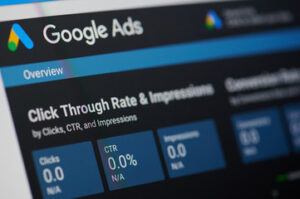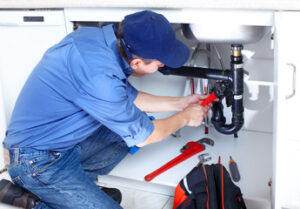Google Ads is a pay-per-click advertising platform that offers many advanced strategies and tools for marketers. Its advanced campaigns, such as Performance Max, include AI optimization.

SEO involves optimizing a website to gain visibility on search engines and improve its ranking. Its focus is on making sure that the website has high-quality, relevant content for each query. Visit https://www.rankboss.com/ to learn more.
Keyword research is a crucial part of creating effective Google Ads campaigns. It allows you to find the search terms that are most relevant to your business and ensures that your ads are displayed when users are searching for those keywords. It can also help you identify potential competitors and inform your ad strategy. There are many tools to help you research keywords, including Google Ads Keyword Planner and third-party tools such as Ahrefs and SEMrush.
To begin, brainstorm a list of potential keywords that relate to your products or services. Try to think creatively and expand your list as much as possible, and don’t filter out keywords too early in the process. Rather, aim to gather a large pool of potential keywords so you can later narrow them down and refine your campaign goals.
Once you’ve collected a list of potential keywords, use a tool such as Google Ads Keyword Planner to evaluate their value. This tool will provide insights such as search volume and competition level, and can help you prioritize keywords based on their relevance to your business goals. It is also important to consider search intent when evaluating keywords. Some search terms may be purely informational, while others might indicate a user is ready to make a purchase decision. Defining search intent can help you structure your keywords by bucketing them into different intention groups, which can improve your click-through rate and conversions.
Lastly, keep in mind that the digital marketing landscape is constantly evolving. New consumer trends and Google algorithm changes can impact which keywords are worth targeting. To stay ahead of the curve, monitor industry blogs and Google’s own updates. Moreover, keeping an eye on your competitors’ ads can reveal the latest trends in search behavior and help you identify opportunities for your own campaigns.
When it comes to Google Ads, the key to success is a well-defined strategy that includes both paid and organic components. In addition to keyword research, this includes identifying your target audience, defining your messaging, and creating compelling landing pages. Ultimately, it is these efforts that will drive traffic and convert your visitors into customers.
Ad copywriting
Google Ads are the most popular ad types, and they require strong copywriting to perform well. Effective ad copy creates a direct connection between a user’s problem and your solution, while also feeding into your conversion rate optimization strategy. The best PPC copywriting uses relevant keywords and compelling messaging to deliver irresistible value, converting users into customers. It also ties directly into the customer journey by creating on-site experiences that match up with their expectations and needs.
Ad copywriting requires careful consideration and attention to detail. The wrong word can make a difference between a high-performing ad and a failed one. This is why it’s important to know your audience and write ads with them in mind. It’s also a good idea to test multiple variations of your ad copy, and to optimize based on performance.
Keywords are the foundation of any Google Ad campaign. They determine who sees your ads and how they’re displayed, and they are the key to attracting qualified leads. To optimize your ad copy, use popular keywords that are relevant to your business and attract a large number of searches. Avoid keyword stuffing, as this can cause your ad to get a low quality score and fewer clicks.
For Search Ads, Google allows you to include three headlines and two ad copy descriptions in your ad. This is not a lot of space, but it can be enough to get the job done. A compelling headline is the first thing that will capture your potential customers’ attention. It’s a great idea to use questions that can grab attention, such as “Why?” or “How?” Questions are an effective way to highlight benefits and show the value of your product or service.
Responsive Search Ads (RSAs) use automated machine learning to adjust your ad copy and improve its performance. This feature is available in both Search and Performance Max campaigns, and it automatically generates different versions of your ad copy based on the results of your landing page content. RSAs can use up to 15 headlines and descriptions, and will experiment with different combinations to find the best-performing assets.
Campaign management
When managing Google Ads campaigns, it’s important to understand the lingo. This includes ad groups, campaign settings, and keywords. Advertisers can also use different bidding strategies to optimize their ads and reach their goals. The most popular strategy is cost-per-click (CPC), which is ideal for businesses that have a clear understanding of the value of each click to their business and can actively manage bids to maximize ROI.
Another important aspect of successful Google Ads management is a well-written call to action (CTA). This is the message you want your customers to take after seeing your ad. It should be short, specific, and enticing enough to encourage the customer to take action. Ads that fail to include a strong CTA can leave the customer feeling confused or unmotivated to convert.
Using third-party management tools can simplify the process of Google Ads management and make it more efficient for marketers. These tools are designed to help marketers manage multiple accounts, run comprehensive reports, and track performance over time. They can also improve the effectiveness of campaigns by identifying areas that need improvement.
When choosing a third-party Google Ads manager, look for software that offers advanced features and easy-to-use interfaces. For example, you should be able to easily customize notifications, and set up alerts that will notify you of any changes to your account. It is also important to look for a tool that supports the type of testing you plan on performing. This will ensure that you get the most out of your Google Ads account.
Adzooma is a Google Ads management tool that provides an intuitive, user-friendly interface. Its Opportunity Engine is a powerful tool that automatically recommends optimizations and suggestions. This saves you time and effort, allowing you to focus on other tasks.
Managing Google Ads campaigns takes a lot of work. There is a lot of reporting, data analysis and general admin to get through before you can start to focus on optimisation. This is why it’s so important to choose a tool that can handle all of these tasks for you. Ideally, it should offer comprehensive analytics and be compatible with your CRM.
Tracking
If you’re using Google Ads to drive sales, leads, or other valuable customer activity, it’s important to track your return on investment (ROI). To measure ROI, you need to know which metrics matter and which ones are just vanity metrics. Identifying which ones are worth your time and money will ensure profit for years to come.
Conversion tracking is a free tool in Google Ads that measures the value of your ads by measuring user actions on your website after they click your ads. It also helps you understand which ads perform well and how they can be improved to achieve your business goals.
To set up conversion tracking, you must first link your Ads account with Google Analytics. This will allow you to see ad performance in your Google Analytics reports. In addition, it will let you import Google Ads conversions into your Google Analytics goals. This is preferable to importing Analytics goals, as it improves cross-device and view-through attribution by matching converted users with their ad interactions. It also supports Enhanced Conversions, which uses hashed data to match conversions with ad clicks.
Once your ad campaigns are linked to Google Analytics, you can choose what kind of conversions to report on. For example, you can choose to maximize conversions, which will only pay for conversions that meet your business objectives. You can also select Maximize viewable conversions, which is a great way to track the effectiveness of your video ads.
Another way to track conversions is by leveraging the Google Ads integration with your CRM system. This will help you keep all your data in one place and analyze it easily. This will also help you make more informed decisions about your marketing strategies.
Setting up conversion tracking in Google Ads is easy and takes only a few minutes. You can do it manually or use the Google Tag Assistant Chrome extension. Before you get started, make sure that all of your conversion tags and remarketing pixels are in place. You should also disable any ad blockers or privacy-focused extensions that might interfere with the tracking process.

